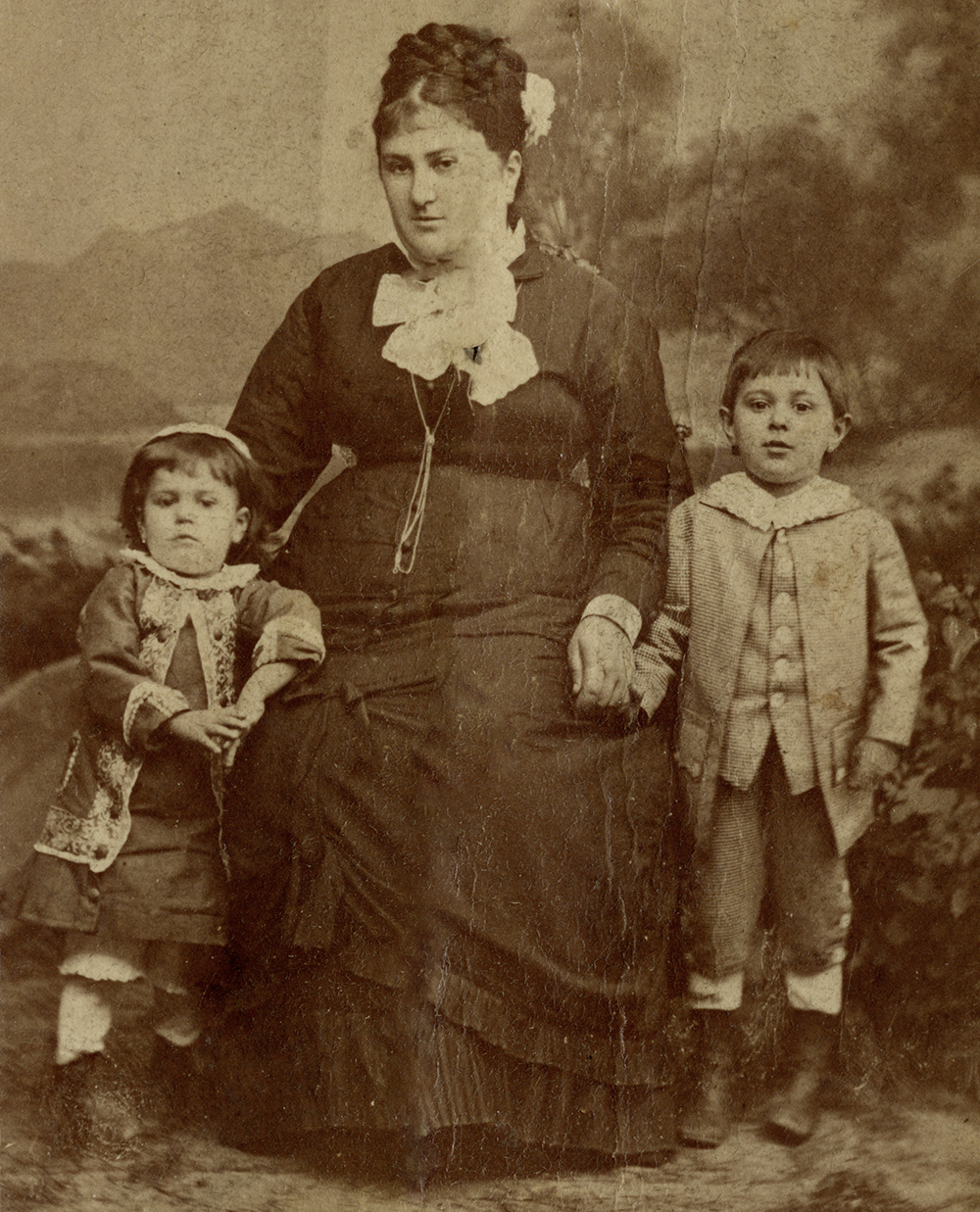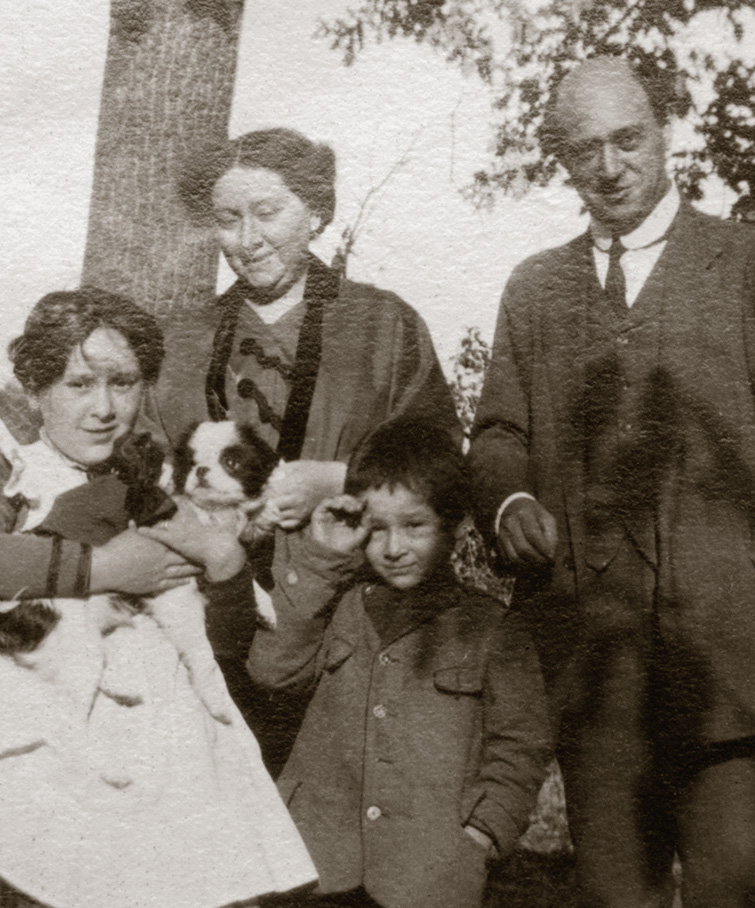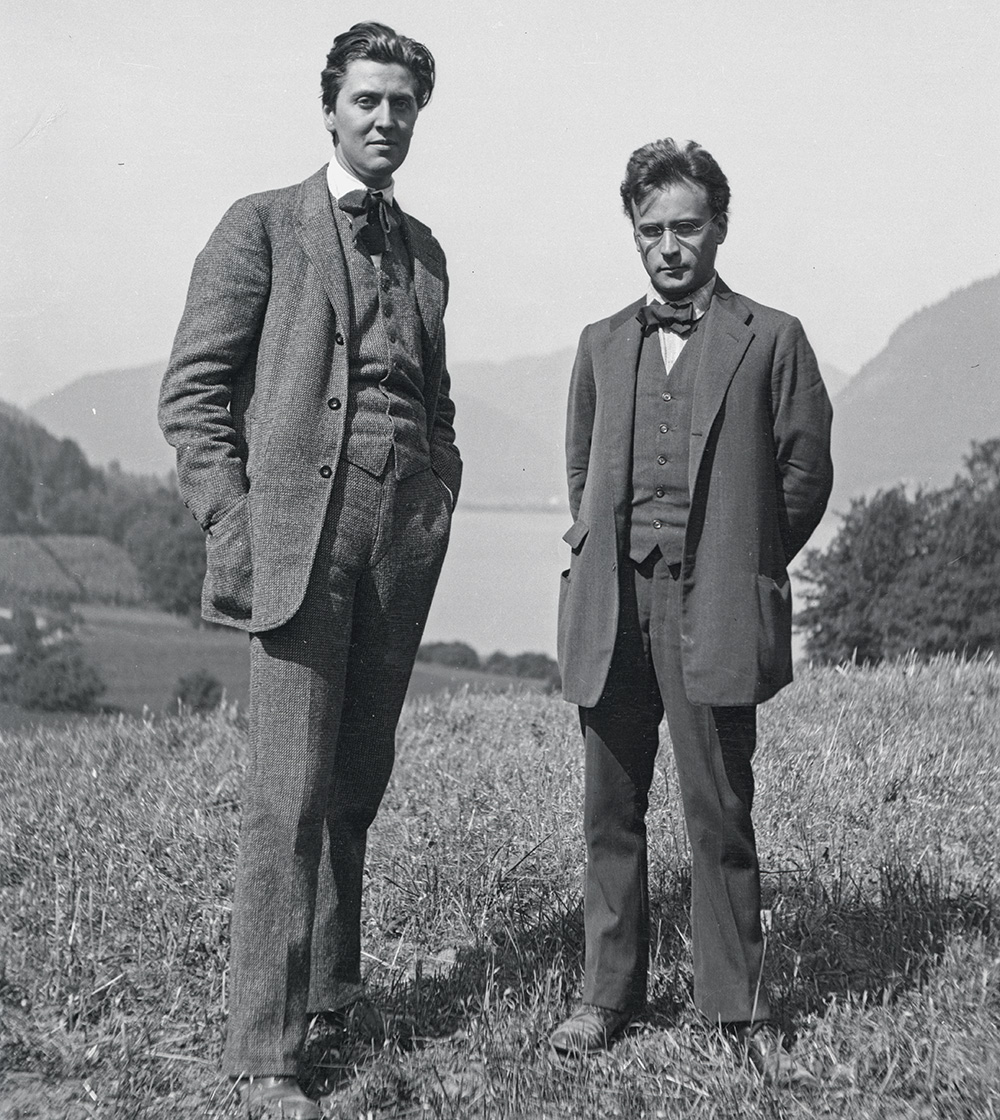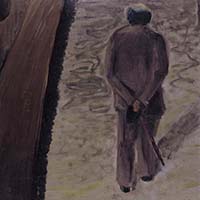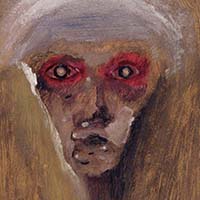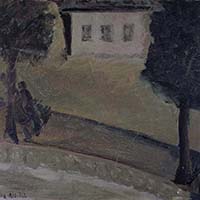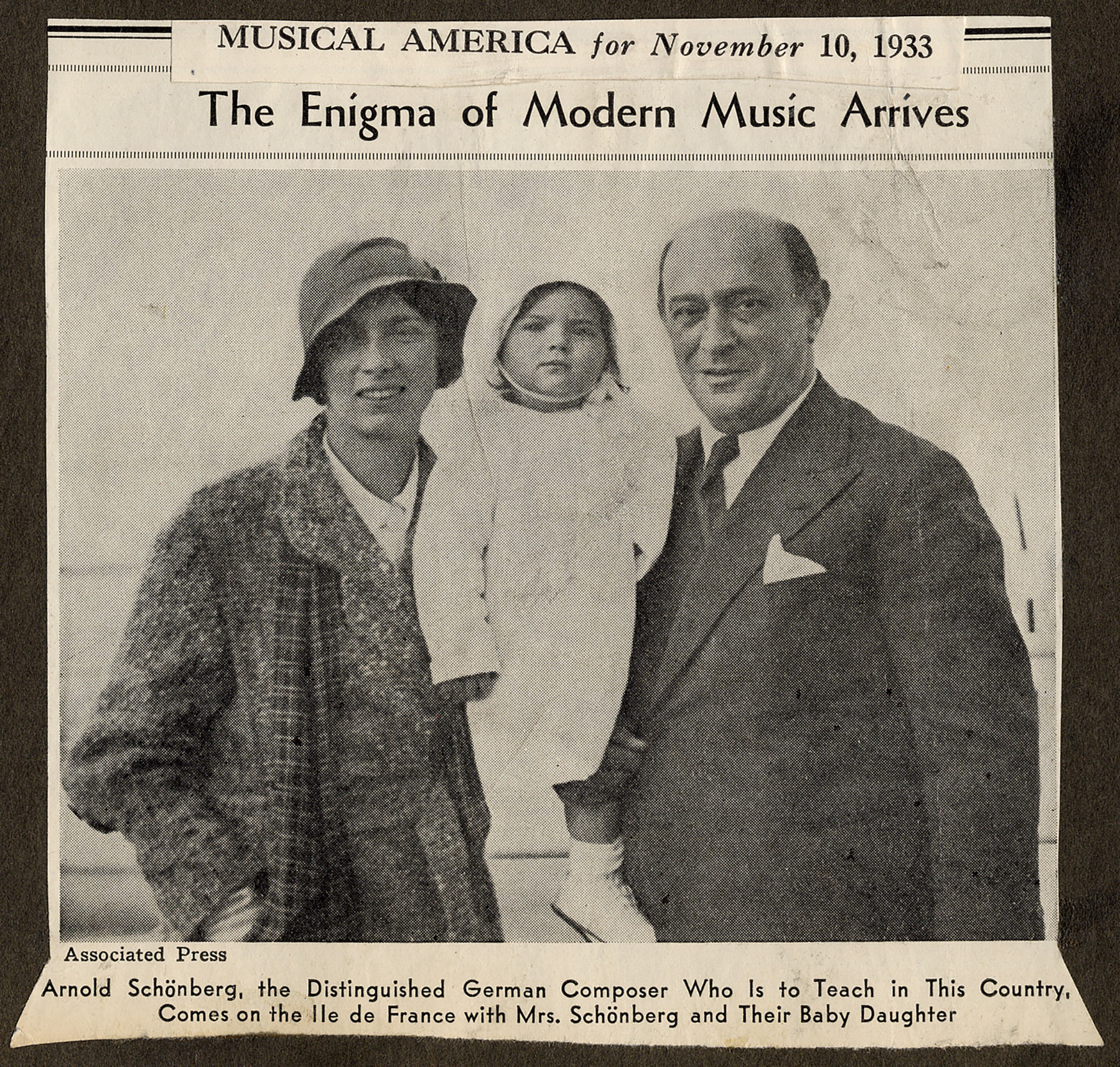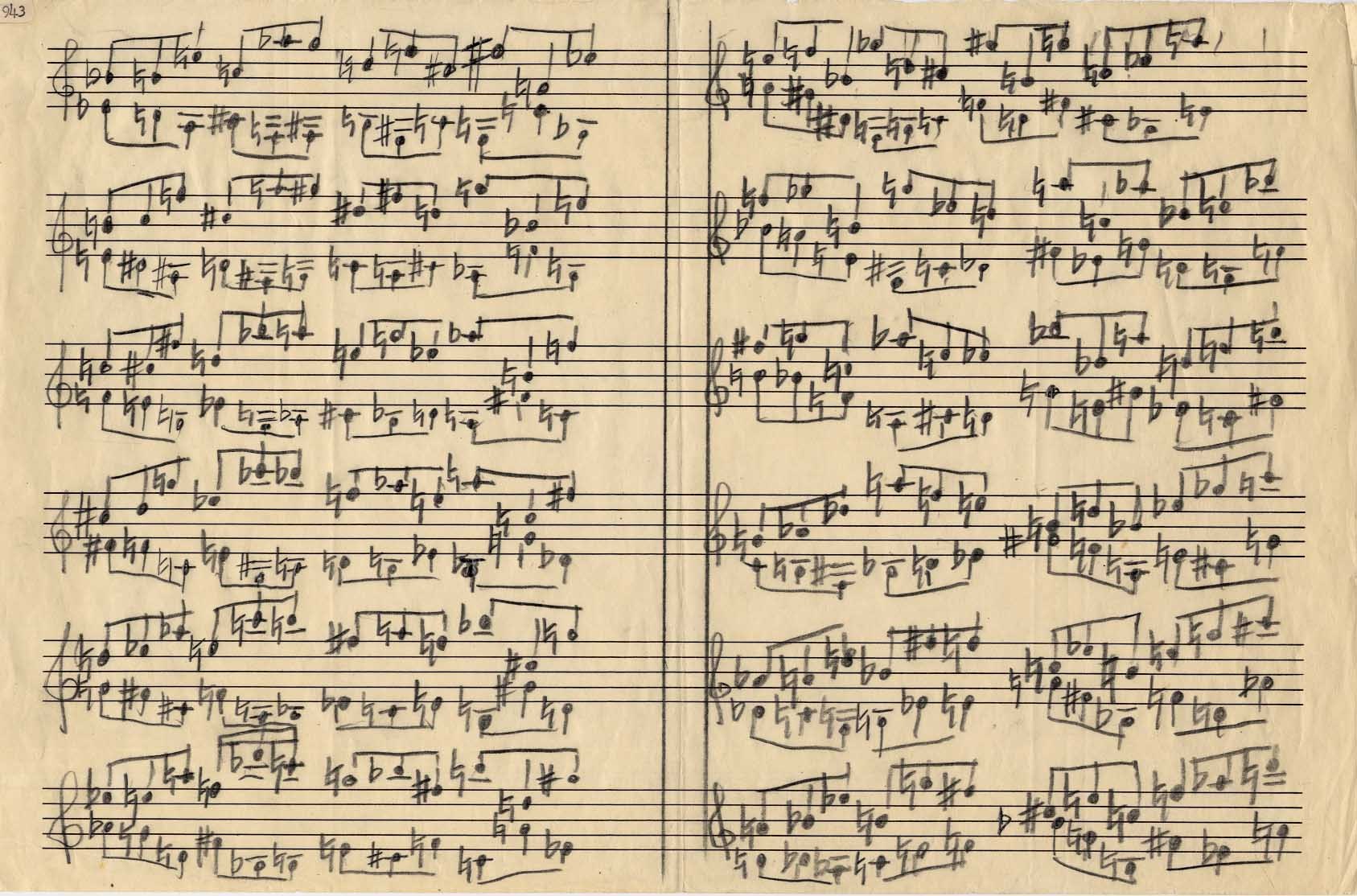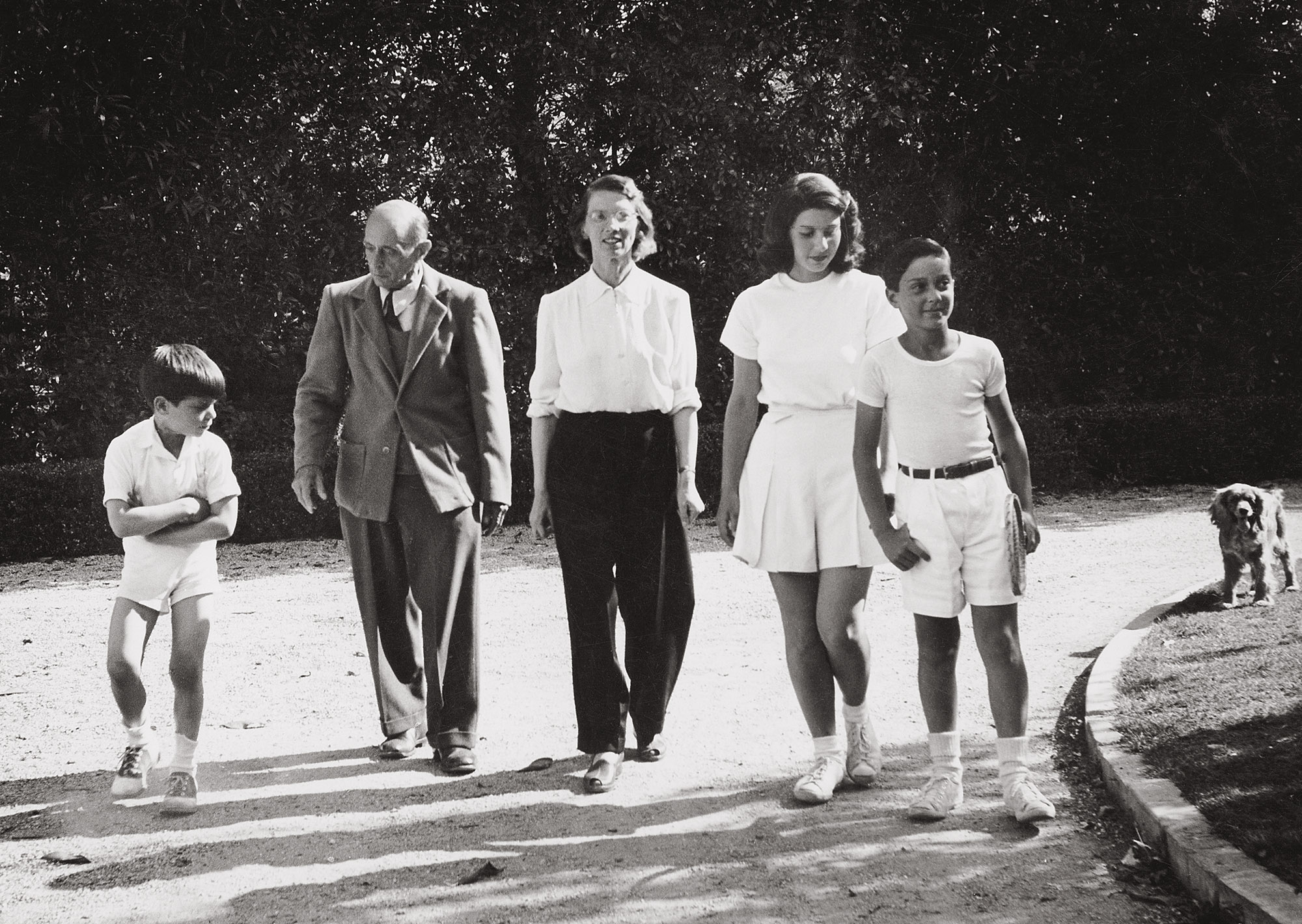Arnold Schönberg was born on September 13, 1874 in Vienna to Jewish parents.
An early photograph of the composer: his sister Ottilie, mother Pauline and Arnold Schönberg himself, 1879
He taught himself composition and took lessons in counterpoint from Alexander Zemlinsky.
Alexander Zemlinsky and Arnold Schönberg, Prague, 1917
In 1899 Schönberg composed his first larger work, the tone poem “Transfigured Night” for string sextet.
In 1901 he married Zemlinsky’s sister Mathilde, with whom he had two children (Gertrude and Georg). The couple moved to Berlin, where Schönberg earned his living from writing operetta orchestrations, teaching, and conducting a cabaret orchestra.
In 1903 Schönberg returned to Vienna; and from 1904 onward he taught Anton Webern and Alban Berg.
Alban Berg and Anton Webern
In the years that followed, his new works included “Peace on Earth” op. 13, the Chamber Symphony op. 9, String Quartet No. 1 op. 7 and No. 2 op. 10, “Expectation” op. 17, and also the “Gurre-Lieder”.
“Peace on Earth” op. 13, title page of the fair copy
In around 1907 Schönberg began to paint. His paintings and drawings consist of (self-)portraits, nature pieces, and also impressions and fantasies. In 1911/12 his works were exhibited in Munich as part of “Der Blaue Reiter”, a group of artists with Wassily Kandinsky at its helm.
Exhibition of “Der Blaue Reiter”, Moderne Galerie Thannhauser, Munich; Schönberg’s “Walking Self-Portrait” can be seen to the left of the door.
In 1908 Schönberg transgressed the limits of major/minor tonality. His works from this phase include the Three Piano Pieces op. 11, “The Book of the Hanging Gardens” op. 15, and the Five Orchestral Pieces op. 16.
“The Book of the Hanging Gardens” op. 15, no. 2, fair copy
In 1911 Schönberg published his “Harmonielehre” and moved to Berlin for the second time.
Arnold Schönberg: “Harmonielehre”, title page
In 1912 Schönberg composed “Pierrot lunaire” op. 21, an iconic work for musical modernism.
In 1915 he returned to Vienna. During the years of the First World War, he focused increasingly on the search for logic and unity in music.
Arnold Schönberg (bottom, 2nd on the right) with his regiment, Bruck an der Leitha, 1916
In 1918 Arnold Schönberg established the “Society for Private Musical Performances” and taught at the Schwarzwald schools.
Concert program for the 3rd concert of the Society for Private Musical Performances in the Mozarteum, March 13, 1920
From 1918 to 1925 he lived with his family at Bernhardgasse 6 in Mödling. Works composed during these years include his Serenade op. 24, the Wind Quintet op. 26, and the Suite op. 29.
Arnold Schönberg at his home in Mödling, ca. 1918
Between 1921 and 1923 Schönberg presented his “method of composing with twelve tones which are related only with one another” to a group of pupils and friends in several meetings in Mödling. In October 1923 his wife Mathilde died.
Hand-crafted device for twelve-tone composition, photo © Walker Alan Dean
In 1924 Schönberg married Gertrud Kolisch, sister of violinist Rudolf Kolisch.
Gertrud and Arnold Schönberg on honeymoon, Venice, 1924
Between 1925 and 1933 Schönberg held a professorship at the Prussian Academy of Arts in Berlin. Works composed during these years include his String Quartet No. 3 op. 30, the Variations for Orchestra op. 31, and “From today till tomorrow” op. 32.
The teacher with his pupils: Adolph Weiss, Walter Goehr, Walter Gronostay, Winfried Zillig, Arnold Schönberg, Erich Schmid, Josef Rufer, Josef Zmigrod, Berlin, 1926
In 1932, the year in which his daughter Nuria was born, he completed the second act of his opera “Moses and Aron”.
Daughter Nuria with her proud father, Barcelona, 1932
Performance history of “Moses and Aron”: The work remained a fragment and received its first stage performance many years after Schönberg’s death.
After the National Socialists seized power in 1933, Schönberg left Germany and went to Paris with his family.
Originally of Jewish faith, Schönberg later converted to Protestantism and returned to Judaism in Paris. This document drawn up by a rabbi in Paris was witnessed and signed by Marc Chagall, among others.
They emigrated to the USA in the same year. Schönberg started teaching in New York and Boston.
“The Enigma of Modern Music Arrives”: Schönberg’s arrival in the USA. (Musical America, November 10, 1933).
In 1934 he moved to Los Angeles for health reasons, where his two youngest sons (Ronald and Lawrence) were born.
The Schönberg family in Brentwood, Los Angeles, 1941
Following a year’s lecturing at the University of Southern California, Schönberg taught at the University of California at Los Angeles between 1936 and 1944.
Schönberg as a lecturer, Los Angeles, 1941
In 1941 Schönberg was awarded US citizenship.
Certificate of naturalization, 1941
Serious illness and cardiac arrest were processed by Schönberg in his String Trio op. 45, which was composed in 1946 after he had recovered.
Schönberg’s late works include the Concerto for Violin and Orchestra op. 36, the String Quartet No. 4 op. 37, the Chamber Symphony op. 38, “Ode to Napoleon Buonaparte” op. 41, and “A Survivor from Warsaw” op. 46.
Row table for “A Survivor from Warsaw” op. 46, 1947
Arnold Schönberg died in Los Angeles on July 13, 1951.
The Schönberg family, Los Angeles, 1948


